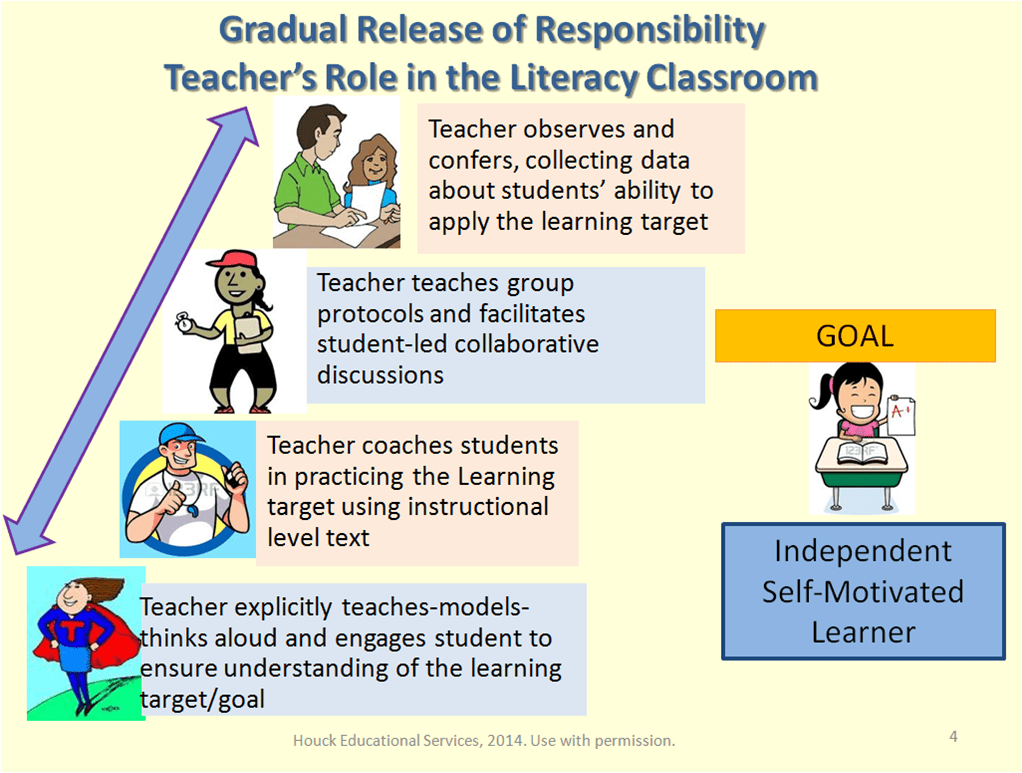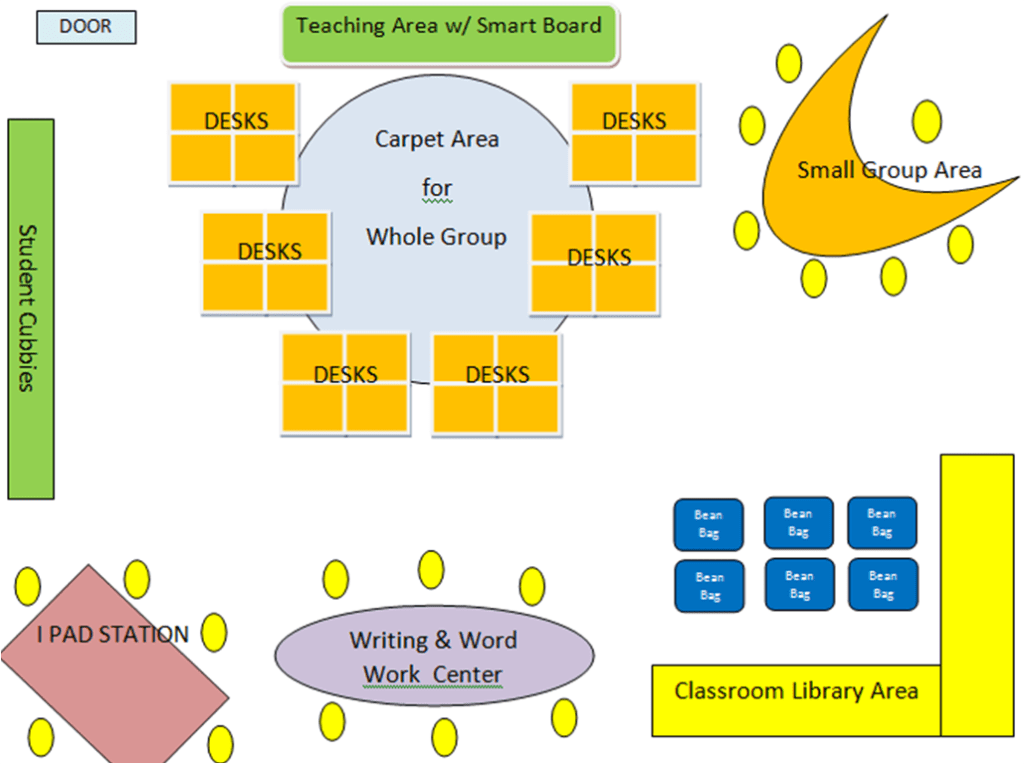In order to support the movement required to support the Gradual Release of Responsibility (GRR), teachers need to consider how their classroom floor plan and walls are designed. Our goal is to shift the ownership for literacy learning from the teacher to the student (Duke & Pearson, 2002). We want students to choose to read and write on their own and be motivated and interested in their learning.
I am in a lot of classrooms and see many great teachers working hard. I usually see teachers working much harder than their students do! The big idea of the Gradual Release is for teachers to create instruction and learning opportunities that set the children up to practice and apply that learning into their reading, writing, discussions, and other work with the teacher’s guidance in order to be able to do those things on their own. Sounds great, doesn’t it?
The teacher’s role in designing and delivering lessons that can motivate and inspire students to do some heavy lifting and become self-directed requires careful thought and planning. The teacher actually shifts his or her own role through the GRR process. As you can see in the illustration below, a teacher moves from a teacher stance in whole group, to a coach in guided small group, to a facilitator and guide when students work in pairs or groups collaboratively, and an observer/assessor while students independently show their level of mastery.

In order to be able to have success in teaching Balanced Literacy using the GRR model, the classroom must be set up for movement. The classroom needs:
- A Gathering Place for Whole Group Instruction
- Tables for Small Group Guided Instruction
- Areas for Student Led Small Groups
- Comfortable Places for Students to Read Independently
Students need to be able to transition between these learning spaces quickly and efficiently. Time is always at a premium in a Balanced Literacy Classroom, so mapping out your classroom before students arrive is a great idea. I like to try using graph paper and draw out my ideas. In her book, Spaces and Places: Designing Classrooms for Literacy, Debbie Diller provides a wealth of ideas for structuring your classroom and shares a template for planning and examples of teacher’s floor plans. Here is a rough sketch:

As you reflect on your vision for your classroom, consider how you plan to teach and how you want your students to learn. Arrange your room and walk through the flow. Be ready to make some adjustments when the students arrive!
RESOURCES
Diller, Debbie (2008). Spaces & Places: Designing Classrooms for Literacy. Stenhouse Publishers. The author shares details about her book on You Tube (below).
Fisher, D. & Frey, N. (2013). Better Learning through Structured Teaching. ASCD.
Video from Instructor Magazine: “How to Organize your Classroom” (below)
This article is #2 in the twelve-part series, “Getting My Classroom Ready for Balanced Literacy Instruction: Classroom Culture and Environment.”